Many plants, fungi, insects and animals are under threat today because fires occur too rarely and in too few places in woodlands compared with the past. Fire is necessary to conserve and restore biodiversity.
But no-one wants fires that are out of control. This is why great efforts are made to put any fires that occur out. Controlled burning, and sometimes called prescribed burning, for nature conservation provides the same benefits for species as the unwanted fire would provide. The most important difference is that burning for nature conservation is managed and controlled by nature conservation staff trained in fire management.
In the period 2015-2020, 14 of the County Administrative Boards in Sweden are working together in an EU project called Life Taiga. Some 120 fires will be lit in a number of nature reserves across almost the entire length of Sweden and will thus bring new life to the woodlands.
A long time is spent planning for a controlled burning event for nature conservation. At the County Administrative Boards, the woodland areas are first surveyed by the site managers to decide where the fires will provide the greatest benefit.
The burning season is from May to the middle of September, the weather and the wind are factors which decide whether it is possible to undertake a burning event as planned and without risking safety. For the same reason it is thus impossible to decide in advance on exactly which day the burning will take place.
The area to be burned should always have clear boundaries which stop the fire from spreading, such as a lake, wetlands, roads or specially cleared firebreaks. Before the burning, the work team lays out fire hoses around the area which can be used for extinguishing the fire and for putting out any fires that have spread.
Those responsible for lighting the fire, do so along the ground in narrow strips within the secured boundaries. One strip should burn out before the next one is lit. In this way, the speed and strength of the fire can be regulated and it is possible to decide exactly what effect the fire will have in a specific area. Other members of the work team water, keep watch, and keep a check on the wind direction. When the fire has gone out, staff remains on site to put out any fires that reignite and keep watch over the area until there are no embers or smoke left.
A few months after the fire, the County Administrative Board surveys the site to see which new plants and insects are in the area. After about a year, the woodland has become lighter, more open and warmer, where plants favored by fire thrive and more birds find insects in the trees.
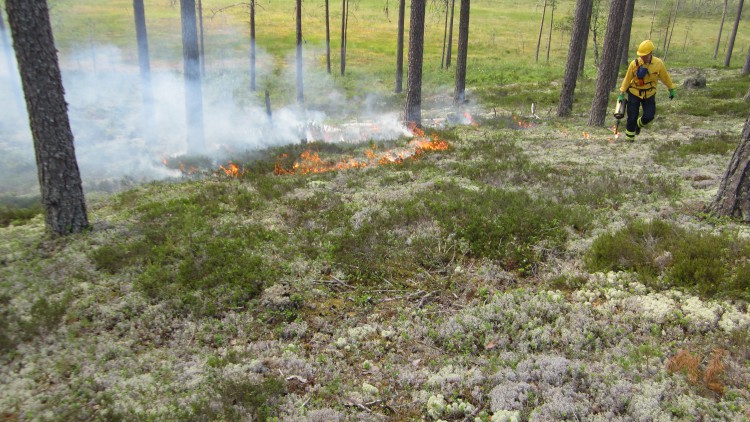
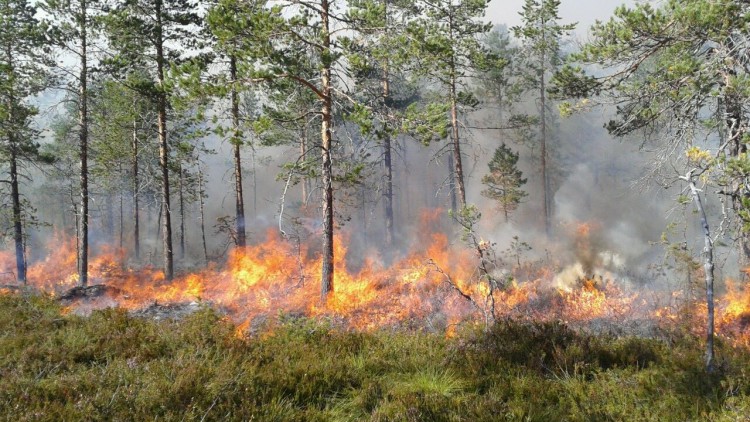
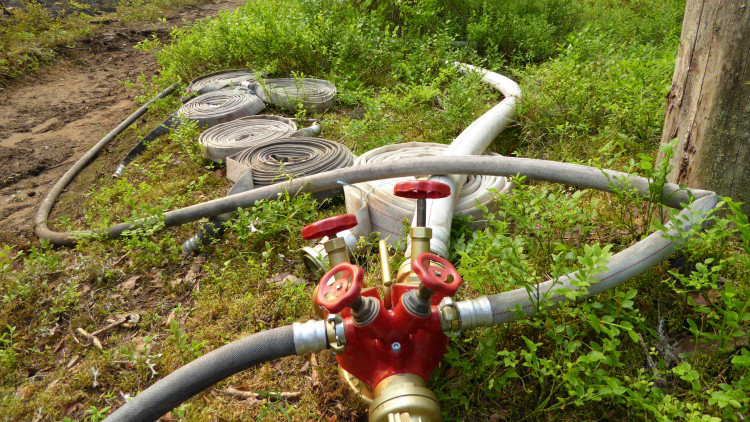
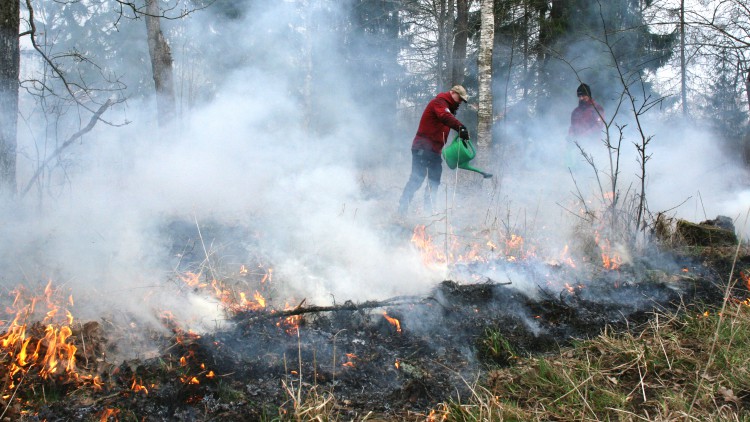
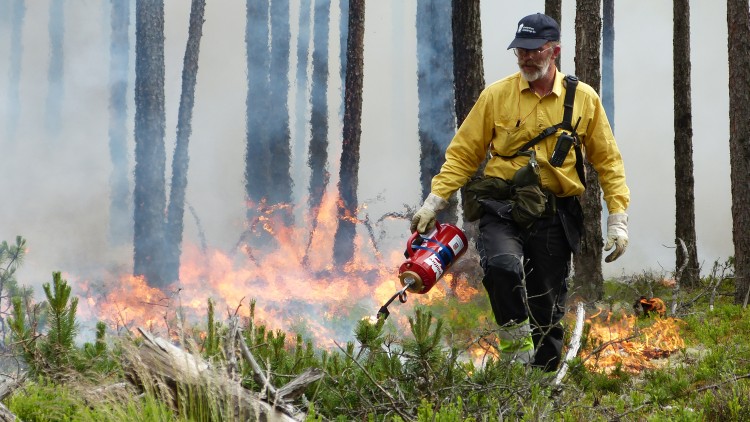
It is a six-year project for the Swedish Taiga! Between 2015 and 2020 some 120 controlled burning events will be undertaken within the project. The aim with burning for nature conservation is to increase and conserve the biodiversity in the most common habitat type across much of Sweden: Western Taiga. The controlled burning events will primarily take place in coniferous woodlands containing mostly pine. All controlled burning events will be take place in so called Natura 2000 sites which are already set aside for nature conservation and which the County Administrative Boards have responsibility to manage on behalf of the EU. Life-Taiga and burning for nature conservation involves restoring and conserving unique nature for coming generations.
Life-Taiga, financed by the EU is one of the largest projects of its kind and has a budget of 100 million kronor over six years. It is a part of the EU’s, the Swedish Environmental Protection Agency and the County Administrative Board’s work to help protect threatened species and their essential habitats.
Besides the Swedish Environmental Protection Agency there are 14 County Administrative Boards involved in the project: Norrbotten, Västerbotten, Jämtland, Västernorrland, Gävleborg, Dalarna, Värmland, Örebro, Västmanland, Södermanland, Östergötland, Jönköping, Kalmar and Kronoberg.
There are lots of us working with controlled burning for nature conservation in Life Taiga. In total there are 14 County Administrative Boards that are partners in the project. Contact the Regional Project Manager if you have any questions regarding burning in a specific county.
There is also a national project management team for Life Taiga at the County Administrative Board of Västmanland.
Here are some interesting links to the project co-financiers, but also to other ongoing LIFE Projects.
CO-FINANCIERS
Swedish Environmental Protection Agency
TIPS ON OTHER SWEDISH LIFE PROJECTS
GRACE – restoration and grazing of islands in the archipelago
ReMiBar – remediation of migratory barriers in streams
SandLife – restoration of sandy habitats
Vindel River LIFE – restoration of tributaries in the River Vindelälven
Unio crassus for Life – the return of the thick shelled river mussel
Life Coast Benefit – Restoring coastal areas and islands in the archipelago
Life Vänern – Restoring important habitats in and around Lake Vänern